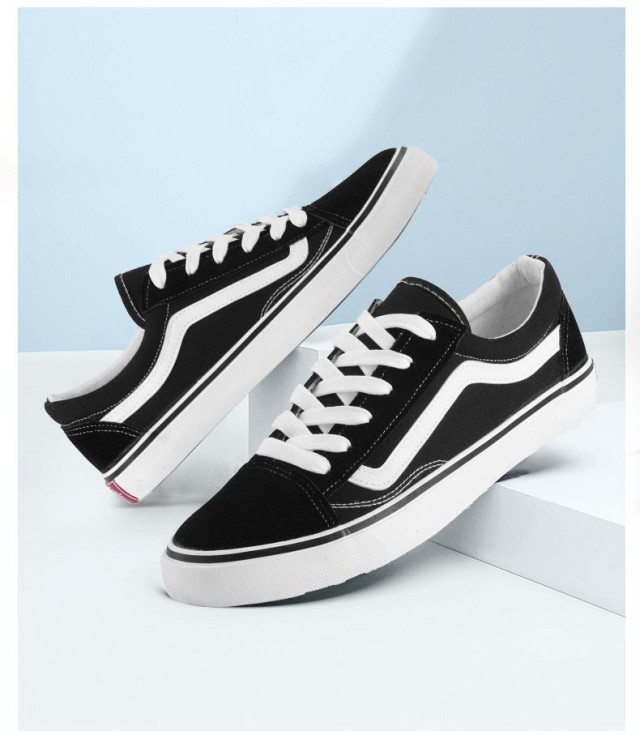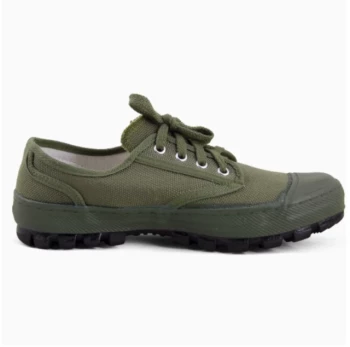Finding the right skate shoe construction can make or break your skating experience. Whether you're grinding rails, hitting the vert ramp, or perfecting flip tricks, your shoe's sole determines how you connect with your board. This guide breaks down the key differences between vulcanized and cupsole constructions—helping you match your footwear to your skating style.
Vulcanized vs. Cupsole Skate Shoes Decoded
At their core, vulcanized and cupsole shoes differ in how their soles are bonded to the upper:
- Vulcanized soles: Thin rubber layers glued and heat-fused to the upper, creating a flexible, lightweight feel.
- Cupsoles: A single molded rubber unit stitched or cemented to the upper, offering structured support.
Why does this matter? The construction method directly impacts board feel, impact absorption, and durability—critical factors for different skating disciplines.
Anatomy of a Skate Shoe: Construction Breakdown
Vulcanized Soles
- Flexibility: Mimics barefoot movement, ideal for technical tricks.
- Board feel: Unmatched sensitivity for precise foot placement (research shows modern vulcanized soles retain durability without sacrificing responsiveness).
- Break-in time: Minimal; conforms quickly to your foot shape.
Cupsoles
- Impact protection: Thicker, denser rubber absorbs shocks from high drops (drop tests confirm superior cushioning versus vulcanized soles).
- Stability: Reinforced edges prevent ankle roll during landings.
- Longevity: Resists abrasion from repeated grip tape contact.
Pro Tip: Hybrid designs now incorporate thermoplastic polyurethane (TPU) in cupsoles, boosting flexibility while maintaining oil and abrasion resistance.
Performance Showdown: Flexibility vs. Impact Resistance
| Feature | Vulcanized | Cupsole |
|---|---|---|
| Board Feel | ★★★★★ | ★★★☆☆ |
| Impact Absorption | ★★☆☆☆ | ★★★★★ |
| Durability | ★★★☆☆ | ★★★★☆ |
| Break-in Period | 1–2 sessions | 3–5 sessions |
Key Takeaway: Vulcanized excels in street skating where tactile feedback matters; cupsoles dominate vert/park skating demanding landing stability.
Skating Discipline Deep Dive
Street Skating
- Best choice: Vulcanized.
- Why: Enhanced flick control for flip tricks and grind responsiveness.
Park/Vert Skating
- Best choice: Cupsole.
- Why: Cushioning for multi-story drops and reinforced sidewalls for ramp carves.
Hybrid Skaters
- Solution: Look for TPU-enhanced cupsoles or vulcanized shoes with padded collars.
Evolution of Soles: Hybrid Tech and Pro Skater Insights
Recent advancements blur traditional lines:
- Vulcanized cupsoles: Combine thin profiles with rubber toe caps for flick durability.
- TPU midsoles: Add rebound to cupsoles without added weight.
Pro skater tip: Many athletes switch between constructions based on trick difficulty—vulcanized for practice, cupsole for competition.
Choosing Your Match: A Step-by-Step Guide
- Identify your primary style (street, park, vert, or mixed).
- Test flexibility: Bend the shoe—vulcanized models fold easily at the ball.
- Check sole thickness: Cupsoles typically measure 2–3x thicker.
- Fit test: Walk in them first; snug but not tight (shoes stretch ~5–10% with wear).
Final Advice: If possible, try shoes with your actual skateboard to assess grip and flick response.
Ready to Elevate Your Skate Game? Partner with 3515 to design high-performance skate footwear tailored to your brand’s audience. From vulcanized street shoes to impact-resistant cupsoles, our manufacturing expertise ensures quality at scale. [Contact us] to discuss custom solutions for distributors and retailers.
Did this guide help? Share your skate shoe preferences in the comments!
Related Products
- Durable Rubber Sole Outdoor Shoes Wholesale & Custom Manufacturing
- Durable Spiked Camouflage Boots Wholesale & Factory Production
- Durable Rubber-Soled Utility Shoes for Wholesale & Custom Brand Manufacturing
- Durable Canvas Work Shoes with Rubber Lug Sole | Wholesale Manufacturer
- Wholesale Durable Camo Canvas Shoes with High-Traction Rubber Soles
Related Articles
- Vulcanized Shoes Decoded: When They Shine and When to Choose Alternatives
- How Vulcanized Rubber Boots Outperform Standard Footwear: Science and Practical Benefits
- Why Vulcanized Soles Dominate Technical Skateboarding: A Science and Performance Breakdown
- How Vulcanized Shoe Construction Delivers Unmatched Durability and Flexibility
- Why Vulcanized Shoes Dominate Durability and Comfort: A Technical and Practical Guide




















